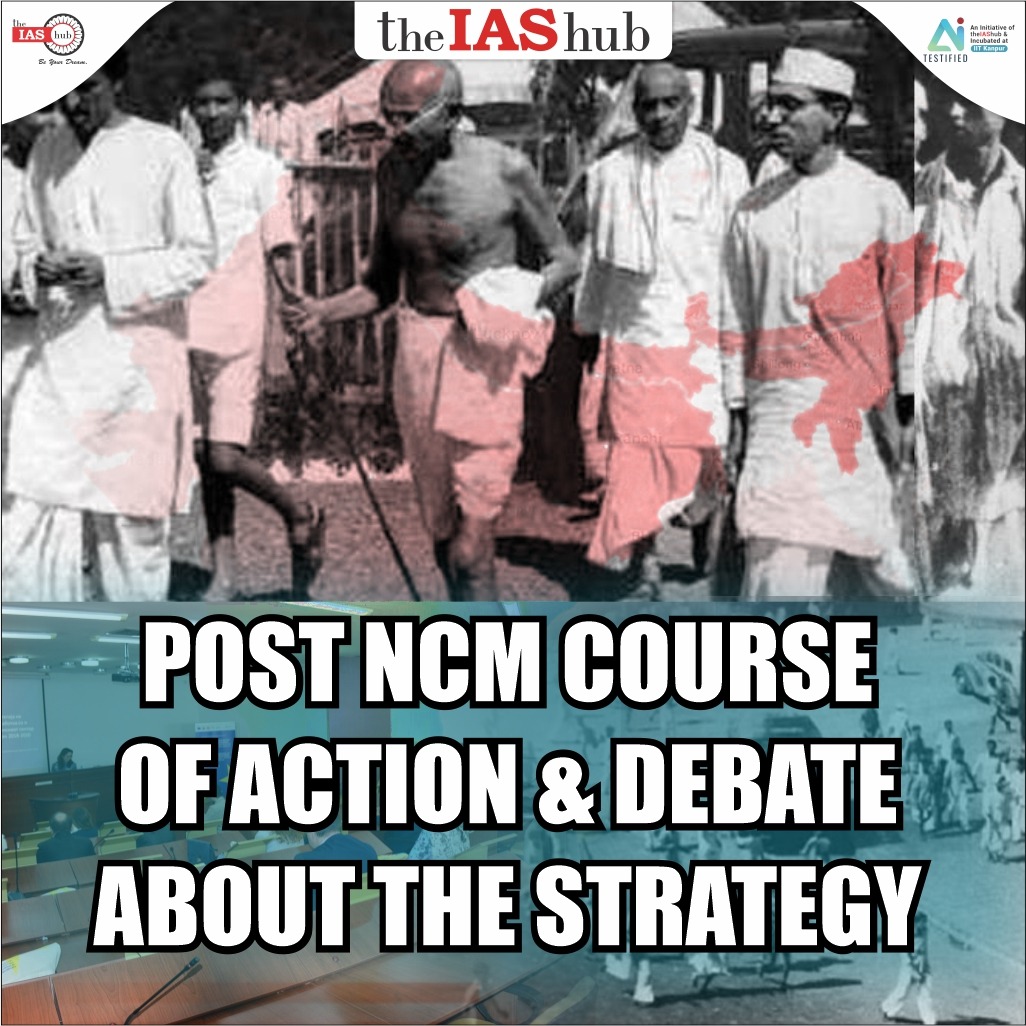The 1920s and 1930s marked a significant period in Indian history. Indians participated actively in the national movement. And India saw the emergence of new forces including youth and trade unionism.


Swarajists and No Changers:
|
Parameters |
Swarajists |
No-Changers |
|
Founders |
CR Das, Motilal Nehru and Ajmal Khan |
Rajendra Prasad and Vallabh Bhai Patel |
|
Objective |
Use legislative councils to expose the government weakness. |
Concentrate on constructive work. |
|
Method |
By protesting within council rather than boycotting. Giving hate speeches which expose the British exploitation. Obstructing house proceedings |
Prepare everyone for the next phase of civil disobedience movement. |
|
Ideological position |
They worked within Congress under Gandhiji presidency but with a caveat that they work from council. |
They continued to work within Congress under Gandhiji presidency |
|
Achievements |
Outvoted the Government several times on several issues. Defeat of the Public Safety Bill in 1928. |
Ashrams sprang up. Popularised charkha and khadi. National schools and colleges were set up. Ensured Hindu-Muslim unity. |
|
Similarities |
|
The Emergence of New Forces – Socialistic Ideas, Youth &Trade Unionism
The 1920s and 1930s marked a significant period in Indian history. Indians participated actively in the national movement. And India saw the emergence of new forces including youth and trade unionism.
Influence of Marxism and Socialism:
North Indian revolutionaries realized that armed conflict necessitated propaganda, recruitment, and arms, and the upsurge in youth activism played a significant role in facilitating the spread of socialist ideas.
Revolutionaries Activities:
The revolutionary activities were a defining aspect of the country's quest for freedom from British colonial rule, driven by a desire for liberty and armed resistance, forming a distinct nationalist force.
Ideology of Revolutionaries: Strike terror in the hearts of rulers, Freedom through revolution, Heroic actions, supreme sacrifice, assassinate unpopular British officials, Expel British with force
|
Reasons:
|
Impacts:
|
Though the revolutionary movement failed it made a valuable contribution to the growth of nationalism in India. Bhagat Singh, Chandrashekhar Azad, Rajguru, etc. became a household name of the Indian people and aroused patriotism among the masses.
|
Revolutionary Movement Ghadar Movement (1913) The Ghadar Movement was an early 20th-century, international political movement founded by expatriate Indians such as Lala Hardayal, Sohan Singh Bakhna, and other leaders to overthrow British rule in India and establish an independent and democratic nation.
Ghadar Party:
Causes of Failure
The Ghadar Party’s success lay in its ideological stance, promoting militant nationalism while being secular. It failed politically and militarily due to a lack of organized leadership, underestimation of preparation needed, and the potential unsuitability of Lala Har Dayal as an organizer. |
Simon Commission:
|
Objectives:
|
Impact:
|
|
Group |
Key Response |
|
Congress |
Resolution to boycott the commission at every stage and form during the Madras session in December 1927; Declaration of complete independence as Congress's goal |
|
Other Groups |
Hindu Mahasabha liberals, Jinnah-led Muslim League faction supported Congress's boycott call; Muslim League held two sessions, one opposing and one supporting the commission; Punjab Unionists, Justice Party chose not to boycott |
|
Public |
Nationwide hartal on the commission's arrival in Bombay on February 3, 1928; Black flag protests, hartals, 'Simon Go Back' chants; Lala Lajpat Rai led a protest in Lahore, was injured by lathi-charge, later died; Dr. B.R Ambedkar submitted a report on the education of oppressed classes |
Criticism:
Nehru Report (1928):
Key Features:
|
Muslim League’s Response:
|
Indian Response:
|


Refine your answer writing skills and elevate your UPSC preparation with personalized support and expert feedback.
Fill out the form to get started with the program or any other enquiries !








Are you dreaming of becoming an IAS officer? Then, IAShub can be your best guide. It is one of the Best IAS Coaching in Delhi. Many students who want to clear the UPSC exam join IAShub for learning. The institute gives both online and offline classes. Their teachers are experienced and helpful. They easily explain every topic. Students also get notes, tests, and tips to do well in the exam.
IAShub is in Delhi and is trusted by many UPSC students. It offers coaching for every part of the UPSC exam – Prelims, Mains, and Interview. The classes are simple and easy to understand. The teachers are experts and guide students in the right way. IAShub is also known for its helpful notes, test series, and answer-writing practice. IAShub is the best coaching in Delhi and also gives UPSC Online Classes. This helps students from any place in India to learn. The online classes are live and also recorded. So, students can watch them anytime. These classes cover the full UPSC syllabus.
Here are some important services provided by IAShub:
The UPSC Civil Services Exam has three parts:
This exam is tough, but with the right guidance, it becomes easy to manage. Students must study smart and stay regular.
IAShub supports students from the beginning to the end. It gives the right books, tests, and notes. The classes are easy to follow, and the teachers are always ready to help. Students get personal doubt sessions too. The test series and answer checking help students learn where they need to do better. Also, free study materials save time and money.
IAShub also guides students during the final stage – the interview. Experts take mock interviews and give useful tips. This full support makes IAShub one of the best IAS coaching in Delhi.